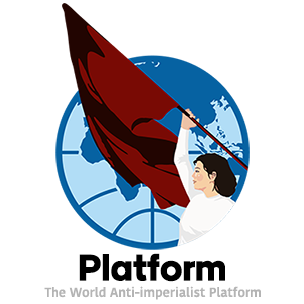
The Gwangju People’s Uprising was a popular uprising of the people of Gwangju, Jeollanam-do, South Korea, in May 1980 to oppose the fascist dictatorship and to achieve democratic freedoms and rights. The Gwangju People’s Uprising took place over 10 days, from May 18 to 27.
The anti-fascist democratization struggle of young students and people, which had been burning like wildfire throughout South Korea since March 1980, was transformed into an anti-government people’s armed uprising in Gwangju on May 17, when the Chun Doo-hwan Party declared “emergency martial law” throughout South Korea to support the “restoration” fascist dictatorship.
The people’s uprising began on May 18 with a protest by students at Chonnam National University. On that day, young students in Gwangju, who had been protesting to demand the removal of “emergency martial law,” were enraged when the military ruling party brought out the most brutal public security forces (Airborne Force) to carry out bloody repression, and they violently protested the oppressors. The resistance movement of young students swept across Gwangju in a few hours, including all the people in the city, as well as the workers and peasants around the city, and their number reached 3 millions on May 21. The uprising crowd stormed the government offices, city hall, and other institutions of martial law and took control of them, raiding their arsenals and seizing thousands of weapons, as well as many of the “martial army’s” tanks and vehicles, and by fighting valiantly, they drove out the “martial army” on May 21 and brought Gwangju completely under their control. The flames of resistance spread to most of the province and North Jeolla Province, with 17 cities and counties, including Mokpo, Raju, Hwasun, Lingguang, and Damyang, falling under the control of the people. In Gwangju, the uprising crowds formed self-governing organizations, the “Citizens’ Committee” and “Democratic Struggle Committee,” and self-defense armed groups, the “Citizens’ Army,” “Special Vigilance Force,” and “shock troops”, and held large-scale rallies to condemn the dictatorship. Jeon Doo-hwan’s party, panicked by the resistance, reinforced the martial law forces and surrounded Gwangju in two or three layers, threatened military action and economic blockade, and tried to appease the uprisings. However, as the uprising continued to resist, the Jeon Doo-hwan Military Fascist Party, under the supervision of US imperialism, launched a vast army of tanks, armored vehicles, helicopters, and tens of thousands of regular troops at dawn on May 27, and ferociously suppressed the uprising by firing large-caliber artillery and suffocating gas attacks, which are unprecedented in the history of warfare. The uprising crowd suffered more than 5,000 victims and 14,000 serious and light wounds, and they fought without bending their fighting spirit until the last moment, even under harsh conditions when food ran out and water and electricity supplies were cut off. The murderous villain Jeon Doo-hwan beastly slaughtered more than 1,700 people, not only in Gwangju, but also in Mokpo, Hwasun, Raju, Ryosu, Suncheon, Jangseong, and other places that responded to the uprising of the people of Gwangju.
The heroic Gwangju People’s Uprising, in which more than 100,000 people from all of Gwangju and its surroundings participated, was the highest form of anti-fascist pro-democracy struggle to liquidate the fascist rule imposed by the oppressors with violence and implement a new democratic government, and the largest and most militant popular uprising in the history of the modern struggle of the people of the East to oppose dictatorship and realize democracy. The uprising greatly shook the colonial rule of the US over South Korea and the ruling military fascist party and caused anxiety and fear to the US and its allies.
Through the Gwangju People’s Uprising, the South Korean people came to know more clearly the beastly nature, deceitfulness, unscrupulousness, and hypocrisy of the U.S., and who is the root cause of blocking the democratization of South Korean society and supporting the fascist military dictatorship and opened a new chapter in the anti-U.S. struggle.
The Gwangju Popular Uprising was a historic event that marked a brilliant chapter in the anti-fascist democratization struggle of the South Korean people.



